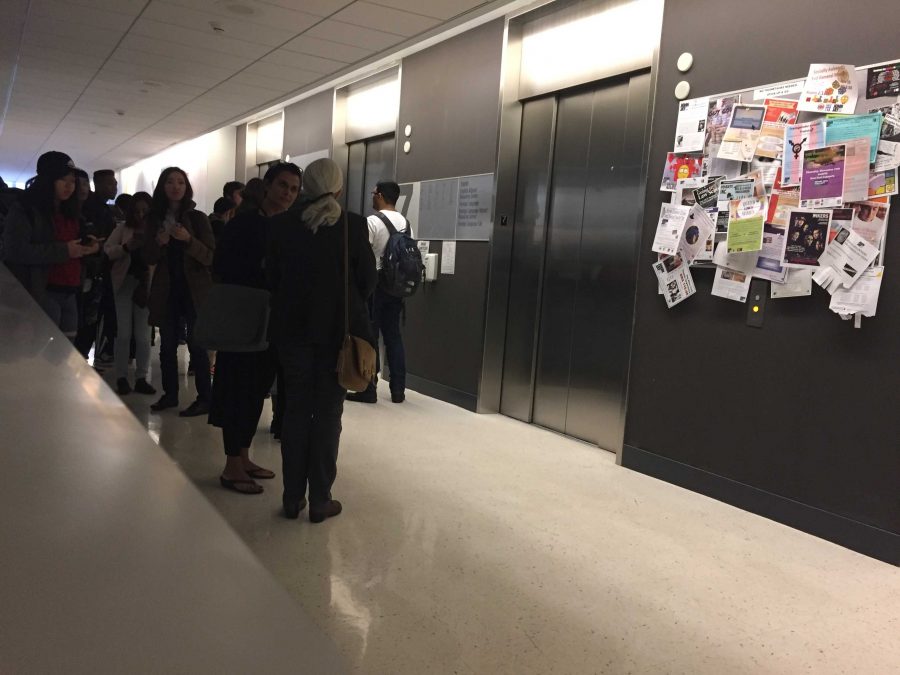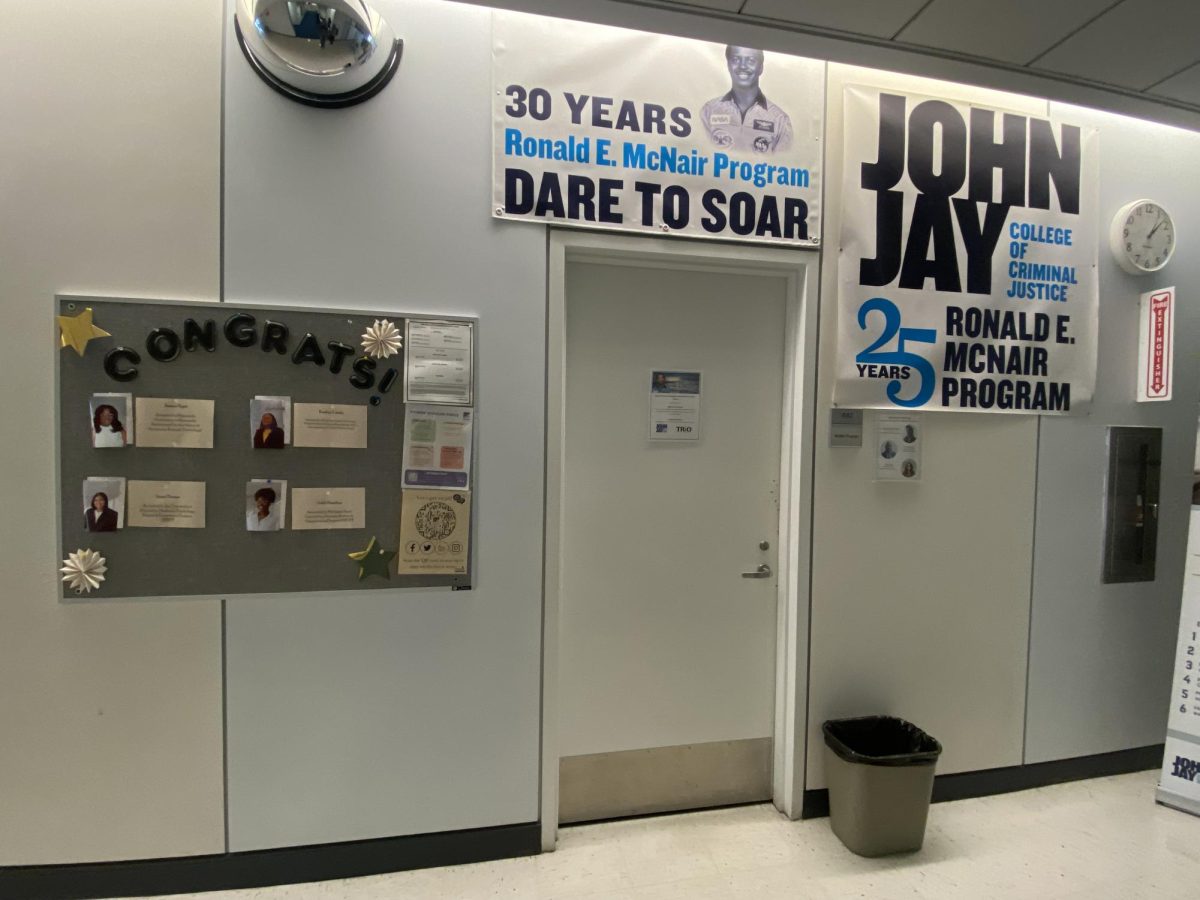Time and again students rush to John Jay eager to be on time to class, but the elevator does not cooperate. The subway got them to school on time, but the elevator refuses.
The eight elevators in the New Building, installed by Thyssen Krupp, took their maiden voyage in 2011, and showed problems soon after. “The problem was first noticed in 2012,” said Steve Waxman Director of Facilities at John Jay.
According to Waxman, the problem is “the people are moving at the same time, classes break off at the same time, and the design of the building kind of leads people to the north bank of the elevators. So we tend to get a lot more traffic on that side. This exacerbates some of the wait.”
Recently, the four south bank elevators ran “local”, stopped on every floor. The four north bank elevators ran local from L3 to the 2nd floor, skipped floors 3 – 7, and resumed to run local between the 8th and 10th floor. People complained. Today all eight elevators run local throughout, from L3 to the 10th floor. Complaints persist.
Waxman said “the average waiting time across the day is 30 – 35 seconds.” But many students say it takes much longer when they have to get to class.
“The elevators are slow. I liked it better when the elevators ran express to the 8th floor,” said Antolina Garcia, 22, a senior majoring in Latin American Studies and Dispute Resolution, waiting for the elevator. “They are very slow!” joined in her friend Michelle Lopez, 21, a senior majoring in Economics and Latin American Studies, waiting with her. “I get late to class, and lateness counts as an absence.”
Part of the problem is the landing schedule. The facilities department sets its own maximum allowable total weight of passengers, and the actions that follow. This weight is lower than the maximum weight listed inside the elevator. Upon reaching the maximum weight, the elevator is programmed to take the following actions: Stop only on floors requested by people currently in the elevator, and bypass calls of people waiting on the floors.
When the elevator lands on a floor to let people out, the doors open, some people get out and others enter. The new total weight is calculated. If it reaches the maximum weight, the elevator obeys the rules. It continues to respond only to requests from inside, ignoring calls from the people on the floors. This can happen a few times in a row. Hence, waiting for the elevator, and facing doors that don’t open, can seem extensive and can feel frustrating.
Kari Olson 57, a senior majoring in Philosophy, stood on crutches with a broken foot, waiting for the elevator. “I hate the elevators! It takes for ever, ever, ever, ever, ever! It makes no difference whether you are going up or down. It takes me over 10 minutes to go up one floor.” She blames it on the design of the New Building.
Escalators are available between L3 and the 4th floor. For the rest of the floors there are stairs, but they are not an alternative for a disabled person. “You have to wait 10, 15 minutes and sometimes I have been there more than 20 minutes waiting for an elevator just to get to the next floor,” said Olson.
A decision has to be made. Is it faster to take the stairs? Or will the elevator get there any minute? But like Waiting for Godot, there is no way to know when it will arrive.
A dashboard installed in front of the elevators in the lobby of the Haaren Building displays in real time the location and direction of the four elevators. Could such a solution be considered for the New Building? “This has been considered, but would be a major capital project,” said Waxman.
Waxman is aware of the problem, and working to find a solution. “We are in the process of reevaluating the situation, in search of improvements, shortening the waiting time for the elevator,” said Waxman. “We are looking into changing what floors the elevators land on so that we can break up the traffic between the elevator banks. We are looking at how much weight an elevator is set to, so that it will take more calls before it is not going to take additional calls. We might tweak this number up so that the elevator can take more people and not bypass floors.”
“I have no problem with the elevator,” said Teresa Lee, 35, a College Assistant – Spanish Tutor – in the Modern Language Center. She arrives at 9:30 am and leaves at 5:00 pm. “I try to avoid the elevator during community hour.”
“I am happy with the elevators,” said Shyah Joseph, 21, a senior majoring in Forensic Psychology and Human Services. “They are very spacious, many students can fit in, and I get to class on time.” She uses the elevator for her evening classes, when the elevators are almost waiting for you.
“Optimally there should be no wait time. People seem to get anxious when waiting for more than one minute,” said Waxman. He is working on finding a solution, and considering “Changing landing schedules once more.”
What about disabled students? Students needing assistance can seek accommodations from the Office of Accessibility Services through the Accessibility Services Director Dana Trimboli at [email protected] and 212-237-8031, NB office L.66.








